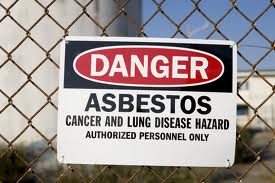- January 21, 2013
- 0

Asbestos-Related Diseases and Smoking
Individually, asbestos exposure and smoking lead to the development of multiple cancers and diseases. Asbestos is closely associated with mesothelioma while smoking is often synonymous with lung cancer. Researchers determined that smoking and asbestos exposure collectively can increase the risk of asbestos-related diseases up to 90 percent in some cases, while having little or no causal effect on other diseases.
Inhaled asbestos fibers penetrate varying levels of the body’s organs, depending on the size and shape of the fibers. As the lungs and other organs attempt to eliminate the presence of the fibers through a gradual exertion, the asbestos pieces either clears the respiratory areas and exit through mucus or further scar the organ as it remains lodged.
Fast Fact: Smoking is the leading cause of preventable death in the United States.
Smoking is cited as hazardous because the inhalation of thousands of toxic chemical contaminants can cause cancer. When these substances are combined in one product, as done in a cigarette or hookah, they pose a significant threat to human health.
For asbestos-related cancers and diseases like lung cancer, asbestosis and mesothelioma, smoking can be a contributing causal factor and further affected when paired with asbestos exposure. Avoidance of smoking can be beneficial to health and caution should always be taken to avoid unnecessary asbestos exposure.
Smoking, Asbestos and Lung Cancer
With over 200,000 new lung cancer diagnoses each year, understanding the causes and risk facts of this disease is an important task for the medical community. Research demonstrates that there is a multiplicative effect between asbestos, smoking and lung cancer. This means that the damage caused by a combination of these two risk factors is greater than that caused by either smoking or asbestos exposure alone.
One study, published in the American Journal of Respiratory and Critical Care Medicine, analyzed data sets of 456 patients who were diagnosed with lung cancer of stage I or II. Factoring in potential modifiers like age, race and smoking history, researchers determined a direct association between increased risks of lung cancer development among smokers who also were exposed to asbestos.
Inhalation of the chemicals within cigarette smoke as the lungs face already face scarring from asbestos leads to additional respiratory complications. Experts suggest that as the lungs attempt to push asbestos fibers out, continuous scaring occurs when the body faces certain fiber sizes.
Wider asbestos fibers are deposited in the upper respiratory tracts more easily and also have an easier time being cleared from the body. Longer and thinner fibers penetrate the lower tracts and more often get lodged in the lungs. Exposure to nonchrysotile asbestos is more often associated with the development of lung cancer in smokers because chrysotile fibers clear from the body more effectively as a result of their longitudinal splits. However, cases of chrysotile asbestos are documented.
Increased risk of developing lung cancer if a person smokes and has been exposed to asbestos.
Researchers found that people who smoke and have asbestos exposure are between 50 and 90 times more likely to develop lung cancer compared to their smoker counterparts with no such exposure to asbestos. Asbestos exposure causes approximately 4 percent of lung cancer cases while smoking causes nearly 90 percent of cases.
Whenever possible, smoking cigarettes and exposure to secondhand smoke should be avoided. Exposure to asbestos, on the other hand, is not always as easy and obvious to prevent. Proper education, awareness, testing and abatement is likely necessary to mitigate asbestos risks.
Smoking and Asbestosis
Asbestosis is a chronic pulmonary disease in which the lungs undergo slow and repetitive scarring, or fibrosis. There is no known cure. It is caused by the inhalation of asbestos fibers and is most prevalent among workers with long and extensive exposure to asbestos. The effect of smoking on asbestosis is a point of contentious debate among researchers, with some experts believing smoking leads to asbestosis while others challenge this notion.
Those who believe the two are related, point to the fact that the simultaneous effect of asbestos scaring and inhalation of dangerous chemicals can lead to inflammation and fibrosis of lung tissue, potentially developing into asbestosis. The human body often has difficulty in clearing the respiratory areas of these fibers because of impaired mucociliary, referring to passing the fibers through mucus. However, because the latency associated with asbestosis, clearly defining this connection can be difficult.
”The effect of smoking on asbestosis is a point of contentious debate among researchers, with some experts
believing smoking leads to asbestosis while others challenge this notion.
According to research by the Agency for Toxic Substances and Disease Registry, smoking increases the risk of asbestosis among asbestos-exposed persons. This is supported by data presented in the 1995 publication in American Journal of Respiratory and Critical Care Medicine. Titled “Enhanced retention of asbestos fibers in the airways of human smokers,” the study concludes that smokers had increased rates of asbestosis progressions.
On the other hand, contrary studies demonstrate opposing theories, showing little to no relationship between asbestosis and smoking. Researchers on this side argue that because of the various complications associated with asbestosis, definitive proof of such a relationship is simply not there.
Significant evidence exists to show how much smoking can in fact worsen symptoms of asbestosis, including breathlessness. However, as to the specifics about how the epidemiology of the disease is affected by smoking, the facts are less known.
Smoking and Mesothelioma
There is no proven relationship between smoking and mesothelioma. Smoking cigarettes is proven to cause lung cancer, but is not a known cause of mesothelioma. A study published in Occupational and Environmental Medicine confirmed this theory.
Fast Fact: The number of mesothelioma cases worldwide is expected to peak around 2020.
Researchers analyzed mortality rates among 1,250 males and 420 females who worked in asbestos factories. Smoking habits were analyzed prior to the report’s follow-up. The study’s authors concluded that no significant association between mesothelioma and smoking existed. The researchers further clarified that the risk of developing mesothelioma is actually independent to smoking, and therefore, not related.
Asbestos in Cigarettes
Cigarettes contain more than 4,000 toxic chemicals; of which more than 60 are identified as probable causes of cancer. Breathing cigarette smoke harms numerous organs in the body, but it is particularly damaging to lung tissue. Every year, hundreds of thousands of Americans die from lung cancer, largely because of tobacco use.
Furthermore, a debate no longer exists about whether cigarettes contained asbestos. Evidence proves that one brand of cigarettes, Kent Cigarettes, integrated asbestos fibers in the filter.
Asbestos in Kent Cigarettes
Asbestos was added to the filter because the manufacturers (Lorillard Company) formed the conclusion that such a filter could “trap hazardous smoke particles,” which eventually was proven as false. Kent offered the revolutionary Micronite Filter, a filter that was laced with crocidolite (blue) asbestos – one of the most toxic forms of the mineral and a proven cause of mesothelioma.
From March 1952 to May 1956, an estimated 11.7 billion cigarettes with the Micronite Filter, which contained 15 to 25 percent crocidolite asbestos, were sold in the United States. In 1954, more than 500,000 packs of cigarettes were bought each day.
One study found that a smoker could inhale “an average of 170,000 crocidolite airborne structures” with only two puffs on a Kent Micronite Filter. So not only did a Kent smoker inhale carcinogenic tobacco smoke, he or she also drew in carcinogenic asbestos dust.
According to historical documents, major players within the tobacco industry, including the Lorillard Company, likely knew about the dangers associated with asbestos use in cigarettes. However, the concern for companies of the time was to efficiently filter cigarettes while preserving the comfort of smokers.
Source: http://www.asbestos.com/asbestos/smoking/
- January 21, 2013
- asbestos




